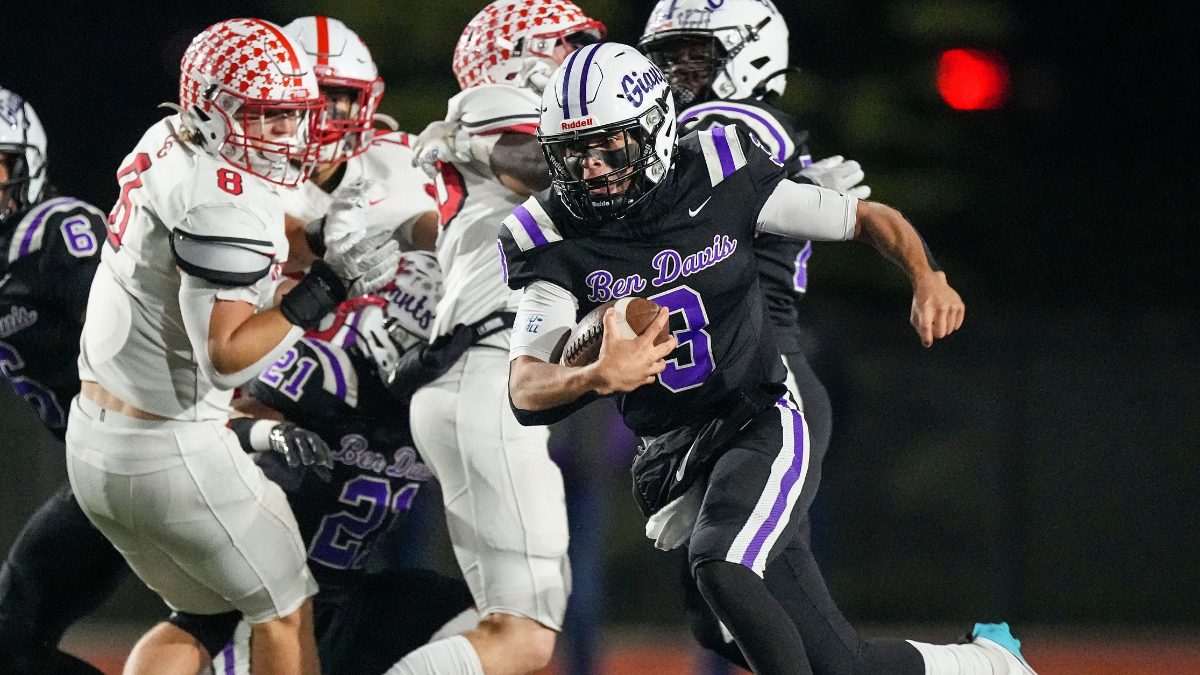Purdue benefits from growth of Indiana high school football

For decades, youngsters in the state of Indiana dreamed of guiding their high school basketball programs to the state finals in Indianapolis and playing for Purdue or Indiana.
While the state’s passion for roundball remains unquestionable, another sport now rivals it in interest in a way that once seemed improbable.
Over time, high school football in Indiana continued to become increasingly popular in terms of player participation and fan interest. What once felt like a way to pass the time before basketball started in November became the highest-revenue sport for the IHSAA.
How did high school football take off in Indiana? Steve Wiltfong, Director of Recruiting and the Transfer Portal for On3.com, Lance Scheib, a long-time high school football coach in central Indiana and Purdue analyst Jason Simmons shared their thoughts with GoldandBlack.com.
THE COLTS
One common refrain gets repeated when discussing the acceleration of football in Indiana: The arrival of the Indianapolis Colts and the drafting of Peyton Manning.
During a time when Bob Knight, Gene Keady and Digger Phelps guided strong, nationally competitive college basketball programs, Indiana sports fans were introduced to professional football for the first time.
“In 1984, the Colts came to Indianapolis, and that’s when Indiana football became a different animal,” said Scheib. “By the mid-to-late 1990s, Indiana (high school) football began generating more revenue than basketball.”
Added Simmons: “I think the start of it can be traced to the Colts. It got people excited about football.”
Though the Colts’ presence sparked increased interest in the pigskin, it hit a whole new level starting in 1998 when Indianapolis selected Manning with the first pick in the NFL Draft.
“High school football in Indiana has been strong for most of my career, and I think a lot of that credit goes to Peyton Manning creating a lot of interest in football, said Wiltfong. “We were a pretty heavy basketball state, and then the Colts got Peyton Manning, and it turned Indianapolis into a football town.”
From 1999 to 2014, the Colts made the playoffs in 14 of the 16 seasons, giving fans a winner to root for. In the 14 seasons prior to Manning’s arrival, Indianapolis made the playoffs just three times. This, Scheib believes, led the biggest surge in football interest that the state saw.
ALIGNMENT
Not only did the Colts’ mere presence lead to a heightened interest in the sport, but the Colts’ investment to the sport at the high school level continues to make an impact.
“The Colts have put a lot of resources into the sport of football. The current administration of the Colts is passionate about youth and high school football,” said Simmons. “They use their platform to enhance the exposure of football in the state of Indiana.”
Not only does the franchise host the state finals at Lucas Oil Stadium each November, but it also works closely with the IHSAA and Indiana Football Coaches Association (IFCA) to optimize the sport at the high school level.
Simmons watched as the Colts opened up their doors to high school coaches to benefit the sport. He stated that Purdue replicates this, as high school coaches visited for spring practice to talk football, whether they produced players in the program or not.
“The IFCA works hand-in-hand with the Colts and the IHSAA to improve football. It’s one of the best organizations in the country. Our organization is stronger than ever,” said Scheib, who said he’s seen high school leaders from other states come to Indiana to learn more about how things run.
Scheib believes that another area where alignment has grown is in individual programs. He points to many school districts where, from the early stages of youth football through the high school ranks, the same offensive and defensive schemes and terminology are used, allowing for more continuity and better readiness at the high school level.
For instance, Scheib references Center Grove, where youngsters develop in the same skillset that the varsity program asks of its players, which has helped the Trojans win five state championships under coach Eric Moore. This is also evident in parochial schools statewide, Scheib noted, many of which contend for state titles in their respective classes on an annual basis.
Simmons also sees this, noting that players begin receiving quality coaching at younger ages, which results in higher-quality play later on. He wondered aloud how many of Indiana’s top football recruits would have only played basketball in the day before football began to grow.
COMMITMENT TO FOOTBALL
In 1993, Simmons played in the IFCA All-Star game, a game which featured 11 Division I recruits, a high number for that point in time. Today, the state produces talent at a far greater clip, showing how far the sport has come over the past three decades.
While the Colts, IHSAA and IFCA helped put infrastructure in place to grow the sport, individual schools increased their commitment to the sport, too.
A drive past high schools in the heartland will reveal countless artificial turf football fields, with many larger schools deploying multiple practice fields to support youth development programs.
“You look at the facilities that the suburban schools and township programs around Indianapolis have, and, outside of a few outrageous programs in Texas and Florida, it’s second to none,” said Wiltfong.
Scheib saw the expansion and commitment to facilities begin in the 1990s, stating that kids used to only receive facilities like this in classic recruiting hotbeds such as Florida, Texas and California.
He also saw schools prioritize the position of strength coach in their football programs. This provides players the opportunity to improve year-round and create better play on fall Friday nights.
“If you don’t have the right facilities and you don’t have a strength coach, your chances of being successful get very slim,” said Scheib, who also remarked on the increased pay to attract and retain strength coaches at the state’s top programs.
PURDUE REAPS THE BENEFITS
Although the Purdue program consistently recruited the state of Indiana and sent in-state stars to the NFL, such as Bob Griese, Rod Woodson and Rosevelt Colvin, it’s seen more and more of those players in recent memory.
Perhaps no season showed it as well as 2021 when George Karlaftis of West Lafayette and David Bell of Warren Central led Purdue to a nine-win season. After the campaign, they respectively became first-round and third-round NFL Draft picks.
Some of the biggest stars on Purdue’s current roster, like Devin Mockobee and Dillon Thieneman, grew up in the Crossroads of America before arriving on campus.
“We don’t have to leave our state,” Simmons said. He pointed to nationally renowned 2025 recruits Landon Brooks of Delta, Mariyon Dye of Elkhart and JonAnthony Hall of Fishers as names atop recruiting boards all across America.
In addition to creating better players, Scheib believes that college programs like Purdue benefit from better football fans. Basketball fans in the state frequently earn recognition as some of the country’s most knowledgeable, and that’s begun to trickle into the bleachers at football fields.
“We have smart students and alumni who reward hard play,” said Scheib, a Boilermaker receiver from 1985-88 who played at Warren Central in Indianapolis with Jeff George. “We’ve become more aware of that, and that’s now the expectation. We all want to win, and Purdue has benefited from this. Your general population has a higher IQ and acumen of what football should look like.”
The post Purdue benefits from growth of Indiana high school football appeared first on On3.
